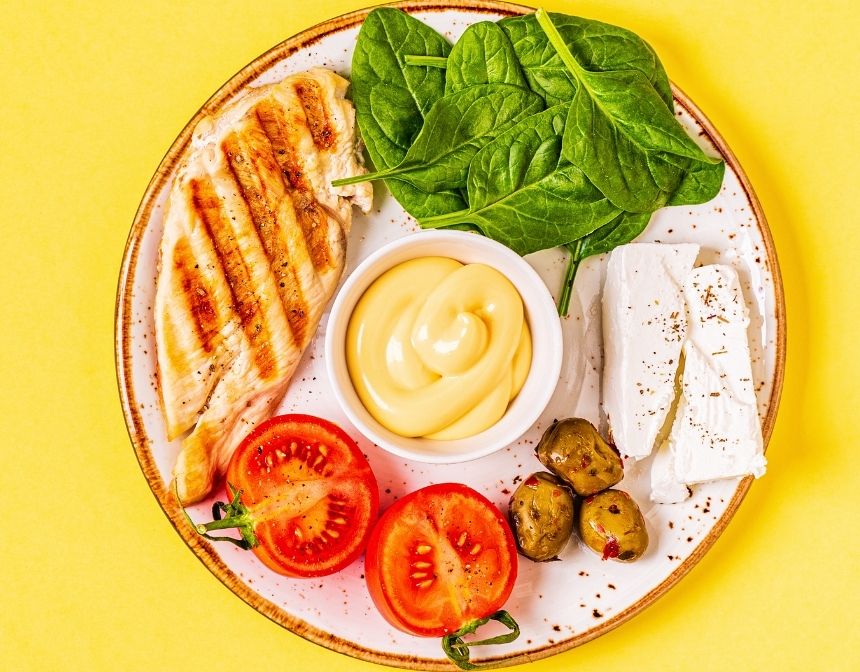What Is The Difference Between Tsukemono And Sunomono?
Tsukemono and Sunomono are both traditional Japanese dishes that involve pickled foods, but they differ in their ingredients, preparation methods, and cultural significance. Here's a breakdown of the differences between the two:
Ingredients & Preparation:
Tsukemono: This term broadly refers to pickled vegetables. Common vegetables used for Tsukemono include radishes (daikon), cucumbers, cabbage, and eggplant, among others. The pickling agents can vary and might include salt, rice bran, sake lees, or even miso. The pickling process for Tsukemono can range from a few hours to several days or longer.
Sunomono: Sunomono typically refers to dishes made with vinegared ingredients. The most common version of Sunomono is a cucumber salad, which consists of thinly sliced cucumbers marinated in a mixture of vinegar, sugar, and sometimes soy sauce. Sunomono can also include other ingredients like wakame (seaweed) or seafood like shrimp and octopus. The pickling process for Sunomono is relatively short, often just a few minutes to an hour.
Taste & Texture:
Tsukemono: Depending on the pickling agent and duration, Tsukemono can range from mildly salty to tangy and can have a crunchy to slightly softened texture. The taste and texture vary significantly based on the pickling method and duration.
Sunomono: It has a distinctly tangy flavor due to the vinegar-based marinade. The texture is usually crisp, especially in cucumber Sunomono, as the marinating time is relatively short.
Serving Occasion:
Tsukemono: It is a staple side dish in Japanese cuisine, often accompanying rice and other dishes in a traditional meal setting. They can be served with practically any meal and are also a common accompaniment to drinks in izakayas (Japanese pubs).
Sunomono: Often served as a refreshing appetizer or side dish, especially during warmer months due to its cool and tangy profile.
Cultural Significance:
Tsukemono: Has a rich history in Japanese cuisine, symbolizing preservation and the changing seasons. They are deeply ingrained in Japanese culture, with different regions having their unique pickling methods and flavors.
Sunomono: While also a traditional dish, Sunomono is more about enjoying the immediate freshness and tang of the ingredients, rather than long-term preservation.
In essence, while both Tsukemono and Sunomono are integral parts of Japanese cuisine, they offer distinct flavors and experiences. Tsukemono is more about the art of preservation and the depth of flavor developed over time, while Sunomono provides an immediate burst of vinegary freshness.
What Does Tsukemono Taste Like?
Tsukemono, or Japanese pickles, have a diverse range of flavors, as they can be made from various vegetables and pickled using different methods and ingredients. However, some general taste profiles can be identified:
Salty: Most tsukemono start with salting the vegetables, which not only helps preserve them but also gives them a distinct salty taste.
Sour: Some tsukemono, especially those pickled with vinegar or naturally fermented, develop a sour tang. This is especially prominent in pickles like umeboshi (sour plum).
Sweet: Certain pickling methods add sugar or mirin (sweet sake) to the pickling mixture, which imparts a mild sweetness to the vegetables. This is common in pickles like fukujinzuke or bettarazuke.
Savory and Umami: Some tsukemono are pickled with ingredients like miso or soy sauce, giving them a deeper, umami-rich flavor.
Crunchy to Soft: The texture of tsukemono can range from crunchy to soft, depending on the vegetable used and the duration of the pickling process. For instance, quick pickles like cucumber or cabbage retain their crunch, while longer-pickled items like daikon radish can become more tender.
Subtle to Robust: The flavor intensity of tsukemono can vary greatly. Some pickles are meant to be light and refreshing, complementing heavier dishes, while others can be bold and assertive.
To describe tsukemono in general terms, they are usually a delightful balance of salty, sour, and sometimes sweet, with a texture that can be refreshingly crunchy. Their primary purpose is to cleanse the palate and provide a contrasting flavor profile to other dishes in a traditional Japanese meal.
Are Japanese Pickled Cucumbers Good For You?
Yes, Japanese pickled cucumbers, often referred to as "tsukemono," can offer several health benefits:
Low in Calories: Cucumbers are naturally low in calories, and even when pickled, they remain a low-calorie snack.
Digestive Aid: The fermentation process involved in some pickling methods can produce probiotics, which are beneficial bacteria that support gut health.
Rich in Vitamins and Minerals: Cucumbers contain vitamins like vitamin K and various B vitamins. They also have minerals like potassium. While pickling can sometimes reduce the vitamin content, many minerals remain intact.
Antioxidant Properties: Cucumbers contain antioxidants, which are compounds that fight free radicals and can help prevent cell damage.
Hydration: Cucumbers have a high water content, which can help in hydration, especially in hot weather.
Reduced Blood Sugar Levels: Some studies suggest that fermented foods, including certain pickles, can help reduce blood sugar levels, though more research is needed in this area.
Satiety: The fiber in cucumbers can help you feel full, which might aid in weight management by reducing overall food intake.
However, it's essential to note a few potential concerns:
Sodium Content: Tsukemono, like many pickled foods, can be high in sodium due to the salt used in the pickling process. Consuming too much sodium can be problematic, especially for individuals with high blood pressure or other health conditions.
Preservatives and Additives: Some commercially-produced pickles might contain additives or preservatives that aren't as healthful as traditionally-made or homemade pickles.
As with many foods, moderation is key. Enjoying tsukemono as part of a balanced diet can allow you to benefit from their nutritional advantages while avoiding potential downsides. If sodium intake is a concern, it's a good idea to check labels when purchasing or consider making your own pickles at home to control the salt content.
What Is Sunomono Sauce Made Of?
Sunomono is a Japanese term for dishes made with vinegar, often referring to salads. Sunomono salads are often made with vegetables and sometimes seafood, all marinated in a vinegar-based dressing. The dressing, or sauce, for sunomono typically includes the following ingredients:
Rice Vinegar: This is a mild and slightly sweet vinegar made from fermented rice. It's the primary sour component in the dressing.
Sugar: Added to balance the tartness of the vinegar and give the dressing a sweet-tangy flavor.
Soy Sauce: It gives the dressing a deeper flavor and a slightly salty taste.
Sesame Seeds: Often toasted, these add a nutty flavor and a bit of crunch to the dressing.
Optional ingredients: Depending on the recipe or variation, some might add mirin (a sweet rice wine), thinly sliced ginger, or dashi (a type of Japanese broth) for a more umami-rich flavor.
To make a basic sunomono sauce:
- Combine rice vinegar, sugar, and soy sauce in a bowl.
- Whisk until the sugar is completely dissolved.
- Adjust the ratios according to your taste preference.
- Sprinkle sesame seeds over the top or mix them into the sauce.
- Use the sauce to marinate vegetables or seafood for your sunomono salad.
This dressing is light, refreshing, and tangy, making it perfect for various salads, especially during warmer months.
What To Serve with Tsukemono?
Tsukemono, a traditional Japanese dish of pickled vegetables, is often served as a flavorful and refreshing side dish to complement a range of main courses. Here are some dishes that pair well with Tsukemono:
Rice Dishes: Tsukemono is commonly served alongside various rice dishes, such as sushi, onigiri (rice balls), and donburi (rice bowls). The tangy and crunchy texture of pickled vegetables can balance the richness of rice-based dishes.
Grilled Meats and Fish: The refreshing and acidic nature of Tsukemono can cut through the richness of grilled meats like yakitori (skewered chicken) and grilled fish, providing a contrast in flavors.
Noodles: Enjoy Tsukemono with noodle dishes like ramen, udon, and soba. The pickled vegetables add brightness and depth to the broth-based dishes.
Tempura: Pair Tsukemono with tempura, a Japanese dish of battered and deep-fried vegetables, seafood, or meat. The acidity of the pickles can counterbalance the oiliness of the tempura.
Bento Boxes: Include Tsukemono in bento boxes as a delightful and visually appealing side dish that complements a variety of items.
Japanese Curry: Serve Tsukemono with Japanese curry to add a zesty element that contrasts with the rich and savory curry flavors.
Sashimi and Sushi: Tsukemono can be served alongside fresh sashimi (sliced raw fish) and sushi, enhancing the overall dining experience with its crisp texture and bright flavors.
Okonomiyaki: Pair Tsukemono with okonomiyaki, a savory Japanese pancake that often includes cabbage and other ingredients. The pickles can provide a nice contrast in taste and texture.
Japanese Barbecue (Yakiniku): Enjoy Tsukemono as a palate cleanser between bites of grilled meats and vegetables at a Japanese barbecue restaurant.
Tofu Dishes: The mild and clean flavors of Tsukemono can pair well with various tofu-based dishes, such as agedashi tofu or tofu stir-fries.
Japanese Breakfast: Incorporate Tsukemono into a traditional Japanese breakfast, alongside rice, miso soup, grilled fish, and other accompaniments.
The Rich History of Tsukemono
The art of pickling vegetables, known as Tsukemono in Japan, has been a treasured culinary tradition for centuries. Tsukemono pickles have graced the Japanese table for many generations, playing a significant role in the nation's gastronomic culture. Originally, pickling was a method used to preserve vegetables to ensure they could be enjoyed all year round. With Japan's distinct four seasons, Tsukemono became a clever and delicious solution to enjoy seasonal veggies even during their off-season.
From Cucumber to Cabbage: A World of Flavors
Among the plethora of vegetables used in Tsukemono, cucumber tsukemono, or "Kyuri no Tsukemono", holds a special place in many Japanese hearts. These pickles often accompany simple rice dishes, providing a fresh, crunchy contrast. Another popular variant is cabbage tsukemono. The layers of cabbage absorb the flavors beautifully, resulting in a delicate balance of sweetness, saltiness, and tang, making it a favorite side dish or an addition to sandwiches and wraps.
Tsukemono: More Than Just a Side Dish
Beyond their role as a tasty accompaniment, Tsukemono pickles have woven themselves into the fabric of Japanese daily life. From everyday meals to festive occasions, they hold a spot on the dining table, symbolizing the essence of Japanese culinary wisdom - where nothing goes to waste and where nature's bounty is celebrated with minimalistic yet impactful flavors. Whether it's the refreshing bite of cucumber tsukemono or the layered textures of cabbage tsukemono, these pickles remain a testament to Japan's deep-rooted respect for nature and its produce.
The art of making Tsukemono has been a cornerstone of Japanese culinary traditions. With origins tracing back centuries, these pickled veggies not only showcase the beauty of preserved foods but also highlight the importance of seasonal eating in Japanese culture. Whether you're familiar with the bright and tangy crunch of the black bean and corn salsa recipe or are diving into pickling for the first time, Tsukemono promises a sensory journey unlike any other. Today's take on this classic dish provides an accessible introduction, but the world of Tsukemono is vast and varied, waiting to be explored. So, whether you're enhancing a sushi night or looking for a tangy snack, Tsukemono is sure to become a staple in your culinary repertoire.









































